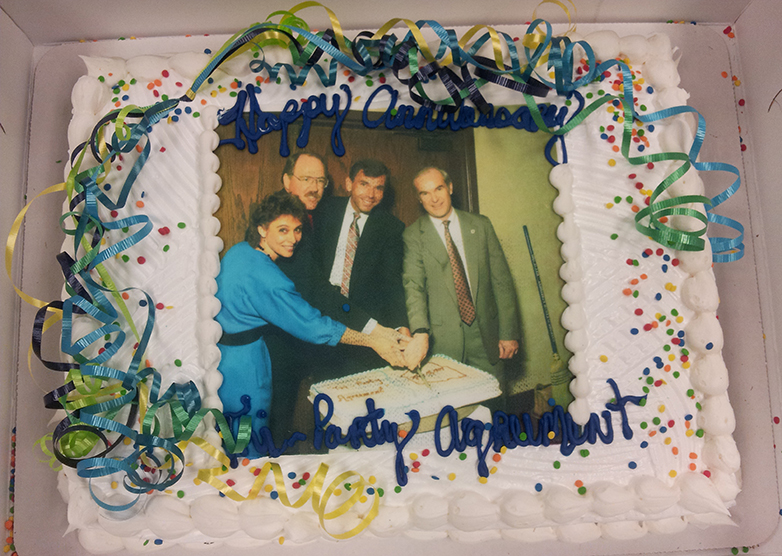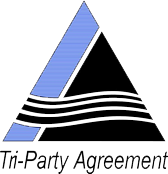Hanford Tri-Party Agreement
The Tri-Party Agreement spells out how Washington State and the federal government will cooperate to ensure that cleanup of dangerous and radioactive nuclear waste at Hanford is in compliance with federal law.
I want to...
Which three government agencies are involved?
In 1989, three government entities came together to sign the Hanford Federal Facility Agreement and Consent Order, most commonly known as the Tri-Party Agreement (TPA). The agencies involved are:
- Washington State Department of Ecology
- U.S. Environmental Protection Agency
- U.S. Department of Energy
The representatives who signed the TPA were Ecology's Christine Gregoire, EPA's Robie Russell, and Department of Energy's Mike Lawrence (shown in the photograph on the cake). The TPA allows the state and federal governments to oversee cleanup of radioactive and chemical contamination at Hanford by two federal laws — Resource Conservation and Recovery Act (RCRA), and Superfund law, known officially as the Comprehensive Environmental Response, Compensation and Liability Act (CERCLA).
What is Ecology's role?
Our Nuclear Waste Program focuses on keeping you safe from the dangers of mixed radioactive and chemically hazardous waste. We work with EPA to ensure that work performed by Energy and its contractors complies with the laws for treatment, storage, and disposal of chemical and nuclear waste.
How is the TPA structured?
The TPA is a living document and a legally binding contract. As Hanford cleanup continues and better information becomes available, the TPA agencies revise the cleanup schedules. The original TPA had 161 enforceable milestones and target dates. It now contains more than 2,000 milestones and target dates, with over 1,800 of those completed.
Any of the three agencies can request changes to the TPA, which includes a process to approve changes and resolve disputes. In addition, the TPA sets out a process for public participation, where we invite the public to take part in the decision-making before any significant changes can be made.
Two main components: legal agreement & action plan
How do we know if milestones are met?
We monitor compliance of cleanup against two federal environmental cleanup laws — RCRA and the Superfund law. The TPA defines and ranks cleanup commitments of both laws, providing standards against which we measure Hanford work to determine if it was done correctly and on time.
After cleanup is completed, Energy is required to provide us with evidence to confirm that the work meets the terms of the agreement. We then share cleanup status updates, as well as announcing when milestones and regulations have been met.
What can you do?
You can help with the cleanup effort by participating in public meetings and comment periods. Your input allows us to focus on the issues most important to you, which enables us to more effectively enforce the milestones outlined in the TPA. Upcoming public involvement opportunities are outlined in the TPA events calendar.
Related links
Contact information
Hanford@ecy.wa.gov
509-372-7950



